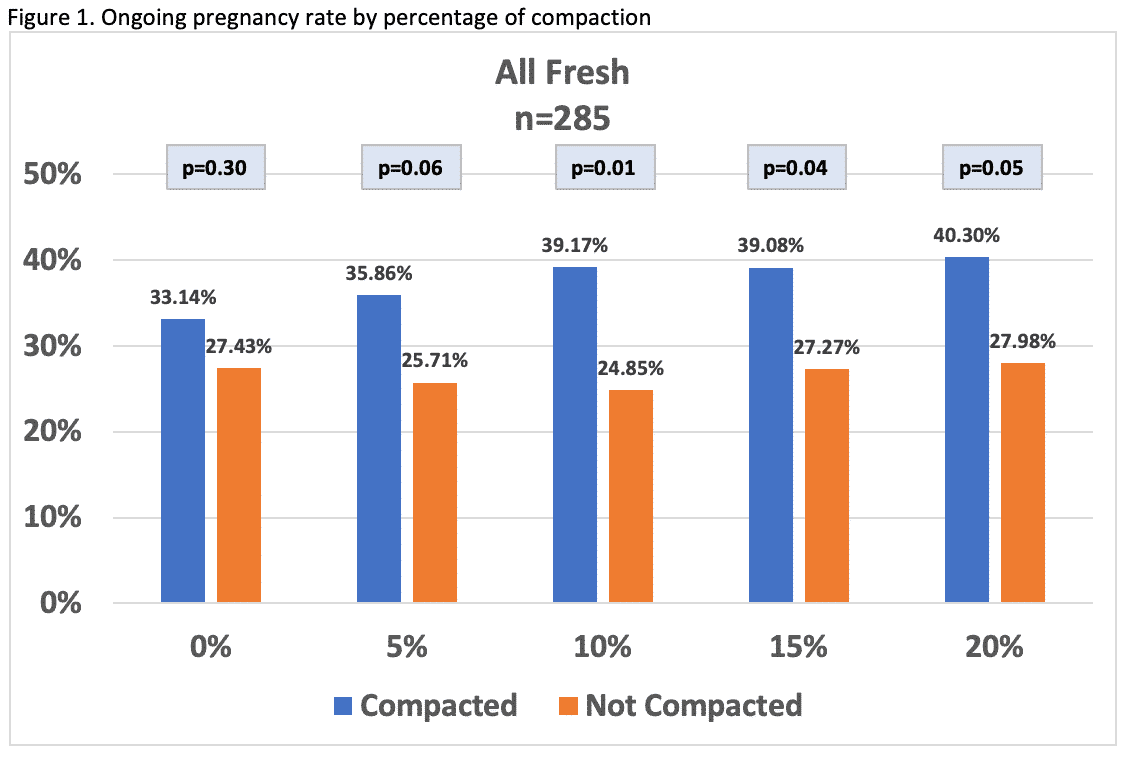
Endometrial Compaction before Fresh Embryo Transfer in IVF Results in Improved Ongoing Pregnancy Rates
2IVF Unit, TRIO Fertility, Canada
3Obstetrics & Gynecology, IVF Unit, Sheba Medical Center, Israel
4Obstetrics & Gynecology, Assuta Ashdod, Israel
Objective:
To investigate whether the change in endometrial thickness between the trigger date and the embryo transfer date has an impact on ongoing pregnancy rate in fresh IVF-ICSI cycles.
Design:
An observational cohort study.
Setting:
Single tertiary care medical center.
Patient:
Ultrasound images from 285 fresh IVF/ICSI cycles. All of the transfers were elective single embryo transfers [eSET] of day 5 blastocysts.
Intervention:
Ultrasound measurements of peak endometrial thickness at the trigger day and again 5 days after the ovum pick-up [OPU] at the ET procedure.
Main Outcome Measure:
Ongoing pregnancy rate in relation to the delta between endometrial thickness at the end of estrogen phase and at the time of ET.
Results:
Percent endometrial compaction, defined as a decrease in endometrial thickness after luteal support, was calculated. The ongoing pregnancy rate was significantly higher in cycles with 10%, 15% and 20% compaction. Based on calculated sensitivity of 53.4% and specificity of 62.9% we defined compaction of 10% as clinically relevant – with this rate of compaction, the ongoing pregnancy rate was 39.2% vs. 24.9% when no compaction was achieved (p=0.01).
Conclusion:
There is a significant correlation between endometrial compaction and ongoing pregnancy rate in fresh IVF-ICSI cycles with transfer of a single day 5 embryo.
